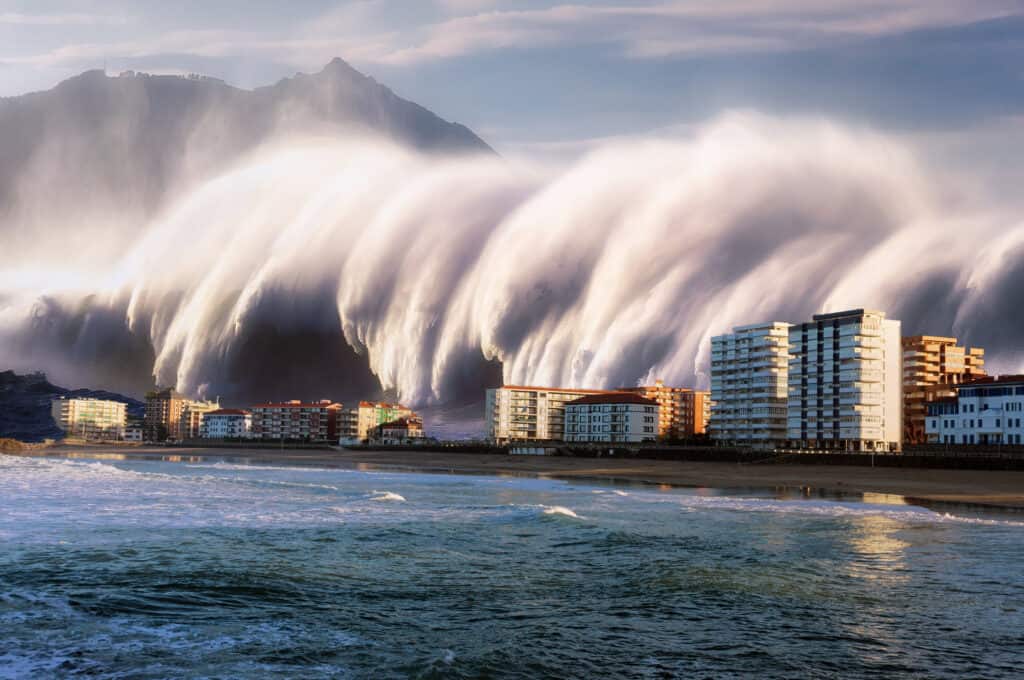There are many coastal communities around the world that need to be aware of the potential dangers of living near the ocean. One of the most famous natural disasters that can occur along the coast is the rather infamous tsunami. Tsunamis happen all the time, even if they aren’t severe enough to make the news, but they are more common in certain locations. Today, we are going to be looking at Hawaii and learning if the island chain is prone to these deadly waves or if it isn’t something to be worried about, plus a few other important pieces of information. Let’s get started!
Does Hawaii Get Tsunamis?

Hawaii is generally considered a tsunami-prone location, primarily because of its location in the Pacific Basin. The Pacific Basin is a region within the Pacific Ocean that includes many continental edges and islands, including places like Japan, New Zealand, Peru, Chile, and more.
What makes this region more likely to get hit with a tsunami is it’s proximity to tectonic plate activity. There are a lot of reasons that tsunamis can occur, but they are all tied to massive releases of energy within bodies of water. Since the Pacific has a lot of tectonic activity (which is also why there are so many volcanoes around the “Ring of Fire”), the likelihood of geological causes of tsunamis is much higher. Whenever a tectonic plate crashes into another or slips while grinding against something, that burst of energy can travel through the water and result in a massive wave.
Other potential causes of tsunamis include large amounts of material falling into the water, something that can happen from earthquakes or even volcanic eruptions. Both of these things are more likely along the Pacific Basin, making it the tsunami hotspot of the world. Hawaii is located directly in the middle of the Basin and has experienced its fair share of tsunamis. As it stands, Hawaii has experienced more than 160 tsunamis since recording began in 1812.
What are The Worst Tsunamis In Hawaiin History

Here is a list of some of the worst tsunamis in Hawaii’s history:
April 1, 1946
An 8.6 magnitude earthquake from the Aleutian Islands off the coast of Alaska generated a 16-foot-tall tsunami that killed 158 people and caused $150 million in damage. It was the first tsunami to be recorded by seismographs across the Pacific. The earthquake originated 13,000 feet below the ocean’s surface and was visible from Hawaii four and a half hours after, nearly 2,400 miles south of the quake’s epicenter.
May 23, 1960
A 9.5 magnitude earthquake resulting from a severe plate shift off the coast of Chile triggered a 35-foot-tall tsunami traveling at speeds in excess of 400 miles per hour. In Hawaii, the wave killed 61 people and caused $75 million in damage, but it ended up killing thousands in Chile. After analyzing the resulting devastation, the researchers found 20-ton boulders that made up the Hawaiin sea wall moved over 500 feet as the water struck it. It was one of the largest earthquakes ever recorded.
March 11, 2011
A 9.0 magnitude earthquake off the coast of Japan unleashed a massive tsunami that killed more than 15,000 people in Japan and reached Hawaii about six hours later. It caused minor injuries and damages estimated at $30 million. It is also famous for triggering a nuclear meltdown at the Fukushima Daiichi power plant, a disaster that is still talked about to this day. Hawaii wasn’t damaged as badly as Japan, although there was significant property damage.
How to Prepare for a Tsunami in Hawaii
There are always risks for natural disasters, no matter where you live, but for anyone living in a coastal region like Hawaii, it’s important to have a plan in place if something were to happen. Here are a few key things to remember for anyone living in Hawaii:
- Know your risk and evacuation routes. If you live near the coast, find out if your area is prone to tsunamis and where you should go if one occurs.
- Make an emergency kit with essential supplies such as water, food, flashlight, radio, first aid kit, etc. Keep it portable and accessible.
- Have a family emergency plan. Discuss what to do and where to meet if a tsunami happens. Practice your plan regularly.
- Stay alert for warnings. Listen to local authorities or NOAA Weather Radio for updates on tsunami activity. If there are early warning systems that offer text messages or calls, sign up for the best chance to get warned early.
The photo featured at the top of this post is © Kelly Headrick/Shutterstock.com
Thank you for reading! Have some feedback for us? Contact the AZ Animals editorial team.






